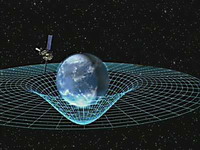Login form
Science
Comets
 People were very superstitious in ancient times. They believed that fuzzy, white streaks that sometimes appeared in the night sky meant an important event was about to happen. They believed that these comets were omens (signs) that bad things were about to happen. Astronomers now know that a comet is a ball of ice, rock, and dust. A comet is like a dirty snowball speeding though space.
People were very superstitious in ancient times. They believed that fuzzy, white streaks that sometimes appeared in the night sky meant an important event was about to happen. They believed that these comets were omens (signs) that bad things were about to happen. Astronomers now know that a comet is a ball of ice, rock, and dust. A comet is like a dirty snowball speeding though space.
WHAT ARE COMETS?
Astronomers in the 1500s and 1600s began to study comets. They found that comets are bodies in space, not part of the atmosphere.
Earth
 Pretend you are an alien explorer from outer space looking for life on other planets. Your spaceship flies into a group of stars that looks like a gigantic whirlpool. The whirlpool is the Milky Way Galaxy.
Pretend you are an alien explorer from outer space looking for life on other planets. Your spaceship flies into a group of stars that looks like a gigantic whirlpool. The whirlpool is the Milky Way Galaxy.
You head for a star with nine planets in one arm of the Milky Way. The third planet from the star is a beautiful blue, white, and green ball. This planet looks like it has life. The name of this planet is Earth.
HOW DOES EARTH MOVE IN SPACE?
Earth spins like a top on its axis. Earth’s axis is an imaginary line that goes through Earth from the North Pole to the South Pole. Earth’s axis is slightly tipped, like a spinning top leaning to one side.
Gravity
 Try to jump as high as you can. Bend your knees. Now jump! No matter how hard you try, or how high you jump, you always come back down again.
Try to jump as high as you can. Bend your knees. Now jump! No matter how hard you try, or how high you jump, you always come back down again.
Something called gravity pulls you back down. Gravity holds you down on Earth. Without gravity, you would fly off into space. You would jump up and just keep on going. That might sound like fun, but you could not live very high up. For one thing, you need to breathe air. The higher you go, the less air there is. You need gravity to keep you down on Earth.
WHAT IS GRAVITY?
Gravity is a force that pulls two objects toward each other. The force is also called gravitation. The bigger an object is, the stronger its gravity.
Eclipse
 Imagine how frightened prehistoric people must have been when they saw a black disk covering up the Sun. This darkening of the Sun in the middle of the day is called an eclipse. The Moon can go dark in a similar way at night. Eclipses are caused by shadows.
Imagine how frightened prehistoric people must have been when they saw a black disk covering up the Sun. This darkening of the Sun in the middle of the day is called an eclipse. The Moon can go dark in a similar way at night. Eclipses are caused by shadows.
ECLIPSES OF THE SUN
An eclipse of the Sun is also called a solar eclipse. The Moon orbits, or goes around, the Earth. As the Moon orbits, it sometimes gets directly between Earth and the Sun.
Jupiter
 Could Jupiter have been a star instead of a planet? Jupiter is the fifth planet from the Sun and the biggest planet in our solar system. More than 1,300 planets the size of Earth could fit inside Jupiter. If you could lump together all eight of the other planets in the solar system, the resulting planet would still be smaller than Jupiter! In some ways, Jupiter is more like a star than a planet.
Could Jupiter have been a star instead of a planet? Jupiter is the fifth planet from the Sun and the biggest planet in our solar system. More than 1,300 planets the size of Earth could fit inside Jupiter. If you could lump together all eight of the other planets in the solar system, the resulting planet would still be smaller than Jupiter! In some ways, Jupiter is more like a star than a planet.
A FAILED STAR?
Like the Sun and other stars, Jupiter is a huge ball of hydrogen gas and helium gas. It gives off more heat than it receives from the Sun. Many moons and several thin rings go around Jupiter. Jupiter’s moons and rings are like a little solar system.
